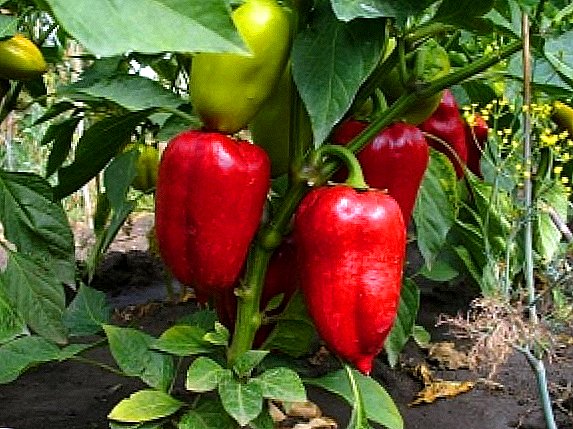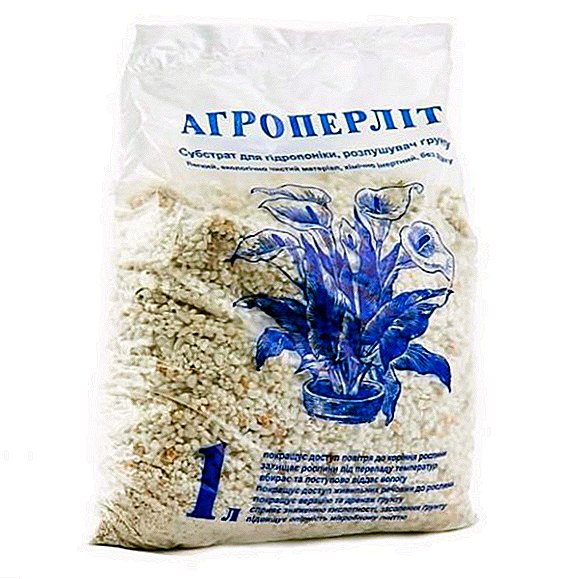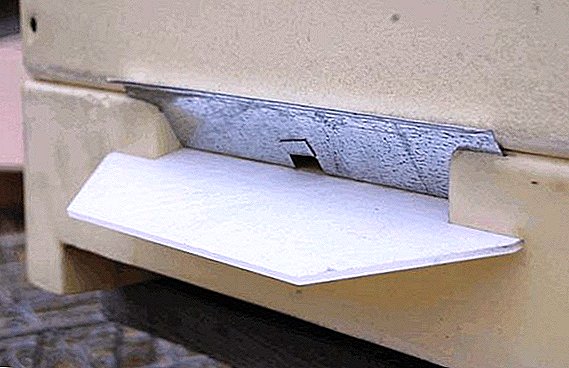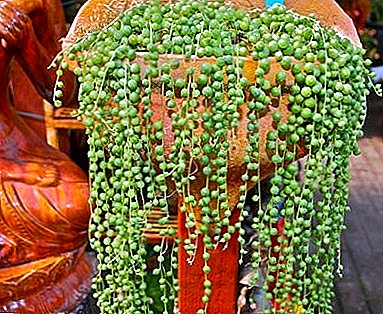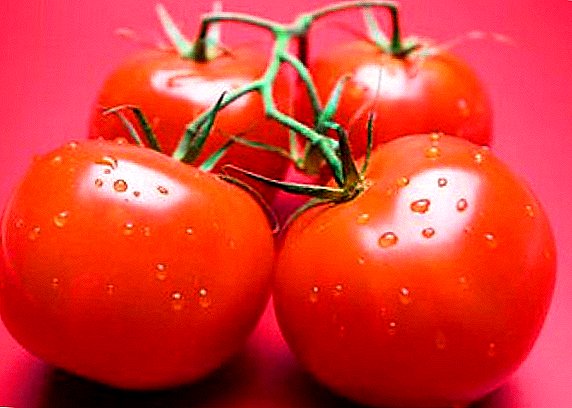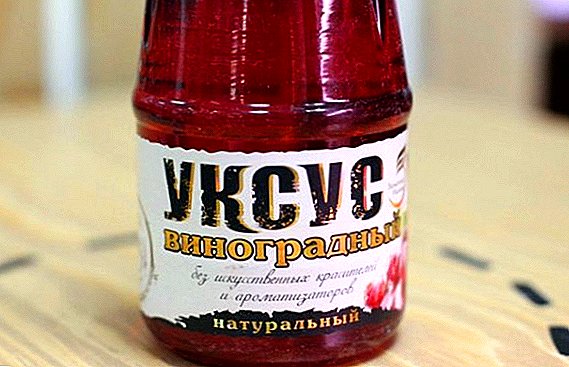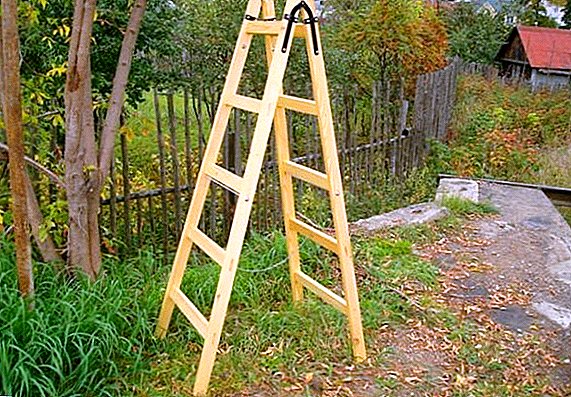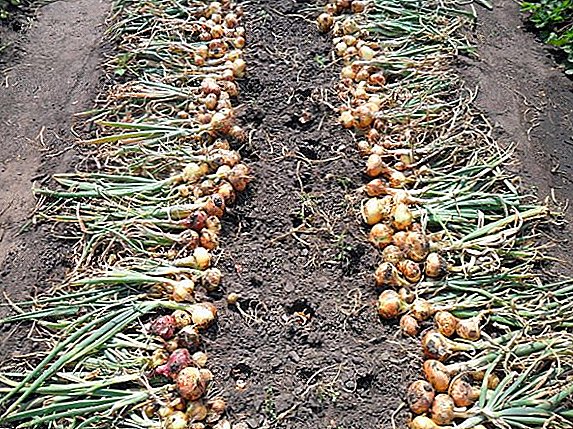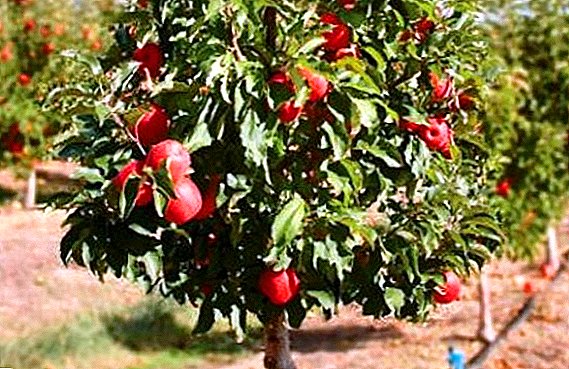 Increasingly, low-growing trees are used for gardening the garden and decor of the dacha plot: such trees do not take much space, but give a spectacular view. Gardeners also organize entire gardens of dwarf fruit crops in their plot, which, although small in size, yield no less than their higher counterparts.
Increasingly, low-growing trees are used for gardening the garden and decor of the dacha plot: such trees do not take much space, but give a spectacular view. Gardeners also organize entire gardens of dwarf fruit crops in their plot, which, although small in size, yield no less than their higher counterparts.
Description
Dwarf Fruit TreesI am low-growing fruit trees grafted on a dwarf stock. The height of adult dwarf crops reaches only 2-3 meters. Such dwarfs live from 20 to 30 years, and they begin to bear fruit from the third year after planting. Very demanding of soil and moisture, because their roots lie shallow. 
Popular species and varieties
Among the popular dwarf and semi-dwarf fruit trees, there are dozens of popular varieties that differ in terms of ripening fruits.
Apple trees
The most popular stock for apple trees is the stock M9. It is especially good for industrial gardening. Popular in our area such early ripening varieties of short apple trees:
- "Candy". Apples of this species have a yellow-green, striped color, firm and juicy flesh. Ripen in August, weighs on average about 120 grams;
- "Wonderful". Fruiting begins in the fourth year after planting. It is characterized by frost resistance and high yield. The apples are large, yellowish, with red barrels, flattened, round. The taste is honey;
- "Melba". Superearly variety. Fruiting begins in the second half of July, yields are high. Fruits are medium size, juicy with caramel flavor. Among the disadvantages are frequent scab damage;
- "Suislep". Less popular dwarf. It gives fruit in three years. The color of the apples is pink-yellow, striped. Fruit weight - from 100 grams.

TO mid-seasonautumn include the following types:
- "Autumn striped". Fruits are large, weighing up to 200 grams. The color is bright yellow, taste sweet and sour. Apples of this sort can be easily stored at low temperatures in basements and cellars;
- "Zhigulevskoe". The most resistant to weather conditions and diseases grade. Gives red-orange fruit in the second half of September. Possesses high commodity characteristics;
- Sokolovskoye. The variety is high-yielding: one tree gives 80-90 kilograms of greenish, with a sweet-sour taste of apples with granular pulp. The plant is a natural dwarf.
Did you know? According to the observations of archaeologists, the apple tree is the first tree cultivated by people, the fruits of which were eaten as far back as 6500 BC.
Winter, or late maturity low-growing apple trees include varieties:
- "Hero". The variety is tolerant of extreme weather changes, but it requires increased attention: for the apple tree to bear fruit regularly, frequent pruning of the branches is necessary. Fruits are elongated, red-yellow, sour;
- "Snowdrop". The fruits have a conical rounded appearance, yellowish color and red barrel, sweet-sour taste. The weight of an apple reaches 150 grams.
- "Moscow Necklace". The view is quite new, but already quite popular. Fruits are bright red with pinkish flesh and have a sweet and sour taste;
- "Grushevka Moscow Region". The tree begins to bear fruit in the sixth year after planting. Differs in rather small fruits of white color. It has good preservation and yield.
 Also to the varieties of apple trees that are equally popular are:
Also to the varieties of apple trees that are equally popular are:- "Ottawa";
- "Flavor de Vare";
- "Airlie Mack";
- "Airlie Geneva".
Check out the apple varieties such as: "Aport", "Rudolph", "Bratchud", "Red Chief", "Spartan", "Mantet", "Currency", "Semerenko", "Orlovy", "Northern Synapse" and Orlik. "
Pears
The most common types of undersized pears in gardeners - medium and late maturity:
- "Grand Champion". A variety with high yield, the fruit is large, weighing up to 250 grams. The pulp of pears is oily, very juicy and sweet. Also distinguished by frost resistance;
- "Veles". Dessert pear round shape. The color of the fruits are greenish. The weight of a pear is 180-200 grams;
- "Parisian". The fruits of winter ripening, taste sweet and sour, quite large. On color - green-yellow, with a emerging redhead.

It is good to plant a pear near the place where you previously grew: plum, cherry or sweet cherry.
Plums
- Blue Free. Very winter hardy type of miniature plum. Differs in precocity. Ink-black and oval-shaped fruit.
- "Chachak". Late-ripe plum tree. The flesh of the plum is creamy, the taste is sweet and sour.
- "The president". The most unpretentious plum tree. The harvest gives quickly, a lot and high quality. It has high product characteristics. The fruits are oval-shaped, sweet in taste.

It will be useful for you to learn about: recipes for preparing the plum for the winter, preparing plum wine, and also reading how to dry the plum.
Peaches
The maximum height of undersized peaches is about two meters.
- Fig peach "Sweet Cap" is considered the most common. Winter-hardy, very fertile. Fruits with whitish flesh and sweet taste.
- "UFO" - another kind of miniature fig peach. Very disease resistant look. The fruits are extremely sweet, large and juicy. A great option for industrial gardening.

Apricot
- "Airlie Red Orange". Superearly variety of undersized apricots. Apricots are large, light orange, with a red side, sweet in taste. Market variety, has high rates of transportability and storage.
- "Hardy". Late apricot variety. It is very common in our area due to the endurance of low temperatures and drought. Fruits are large, with easily separable bone. The skin is thin, the flesh is saturated orange, juicy, sugar-sweet.
- "Crimean Cupid". Medium late variety. Apricots are large and compressed, weighing up to 100 grams. The color is light orange, with a sour taste. Very fragrant.

Did you know? Queen of England Elizabeth II begins her breakfast with two plums grown in her own garden in the Holyrood Palace. The variety of these plums is called "Brompkon".
The advantages of dwarf garden
All the advantages of dwarf trees for a garden come down to the concept of the convenience of growing such plantations.
Early fruiting
All varieties of dwarf trees have high yields, which is very important, especially when industrial gardening. Also, stable fruiting in dwarf plants is established at the age of 8-10 years, which is much earlier than in ordinary fruit crops.
Ease of care
The height of the plants makes it easy to maintain the garden in proper condition: prune, tie up, clean and fertilize. Also, the height of low-growing plants greatly simplifies harvesting.
Yield
The quantity and quality of fruits in dwarf trees are not inferior to an ordinary garden; moreover, they are even higher. This is due to both earlier maturation and a relatively small waste of energy on the growth of the tree itself. 
Are there any downsides?
The organization of a dwarf garden is not without flaws.
Initial investment
The cost of purchasing planting material is many times greater than when planting a pair of ordinary trees. Also, dwarf varieties themselves are more expensive than cuttings of simple fruit trees.
Difficulty of care
Here the complexity is not in the events, they are the same as in a regular garden, but in the frequency of their holding. And to allocate enough time is often difficult.
Lifespan
Low-growing varieties of trees live almost two times less than an ordinary garden, which means that their fruiting period is shorter.
The need for support
The shallow bedding of roots of stunted breeds forces the gardener to acquire supports for each tree. It is impossible to predict whether a tree will sag or fall: from the weight of the fruit or from the wind.
Important! In the process of choosing a place for a garden, pay attention to the future neighbors of your trees: if maple, linden or oak grow nearby, the place is more than suitable. If the surrounding area is covered with alder, sedge and horsetail - the acidity of the soil is increased and it is not suitable for fruit crops.
How to plant and care basic rules
Dwarf trees can serve not only for planting in the garden, but also as a decoration for the house. Such babies are planted in the tub and at any time can be transferred to the open ground.
Landing
The most optimal time for planting fruit crops is autumn. Temperature conditions and a long period before the beginning of the growing season contribute to the rooting of the roots and the growth of the root system as a whole. The soil should be plowed and flat, marked up for planting seedlings. Planting pits should be 60-70 centimeters in depth and about a meter in width.  When laying the planting material in the pits should be added mineral and organic fertilizers, which will significantly accelerate the formation of additional shoots. Before planting, seedlings are inspected, sorted and cut. Planted cuttings should be in the ground at the level of grafting, it is not worth to sprinkle the grafting itself with the ground. Upon completion of the landing trees need to be shed properly.
When laying the planting material in the pits should be added mineral and organic fertilizers, which will significantly accelerate the formation of additional shoots. Before planting, seedlings are inspected, sorted and cut. Planted cuttings should be in the ground at the level of grafting, it is not worth to sprinkle the grafting itself with the ground. Upon completion of the landing trees need to be shed properly.
Important! With improper actions in the process of planting and caring for a stunted garden, trees can change their variety by going to the roots of the rootstock.
Care
Unlike ordinary fruit trees, dwarf trees are more demanding on the soil, so its condition should be monitored: carry out regular watering, fertilize. Loosening here will be inappropriate, since the young roots of trees are shallow. As the garden develops, garden care activities may vary slightly. So, over time, it is necessary to pruning, preventive treatments, organize supports and cover the garden for the winter. 
Harvesting
The most pleasant thing in the process of growing an orchard is, by all means, the time of harvest. Harvesting takes place at different times: it all depends on what types of plants you have planted - early, middle or late ripening. The process itself is fairly easy and fast, this contributes to the size of the trees.  Like any other occupation gardener, planting and growing a dwarf orchard takes a lot of effort and time. But the return is worth it: the yield of such plantations exceeds the yield of ordinary gardens, and most importantly - you can receive the fruits much earlier.
Like any other occupation gardener, planting and growing a dwarf orchard takes a lot of effort and time. But the return is worth it: the yield of such plantations exceeds the yield of ordinary gardens, and most importantly - you can receive the fruits much earlier.


